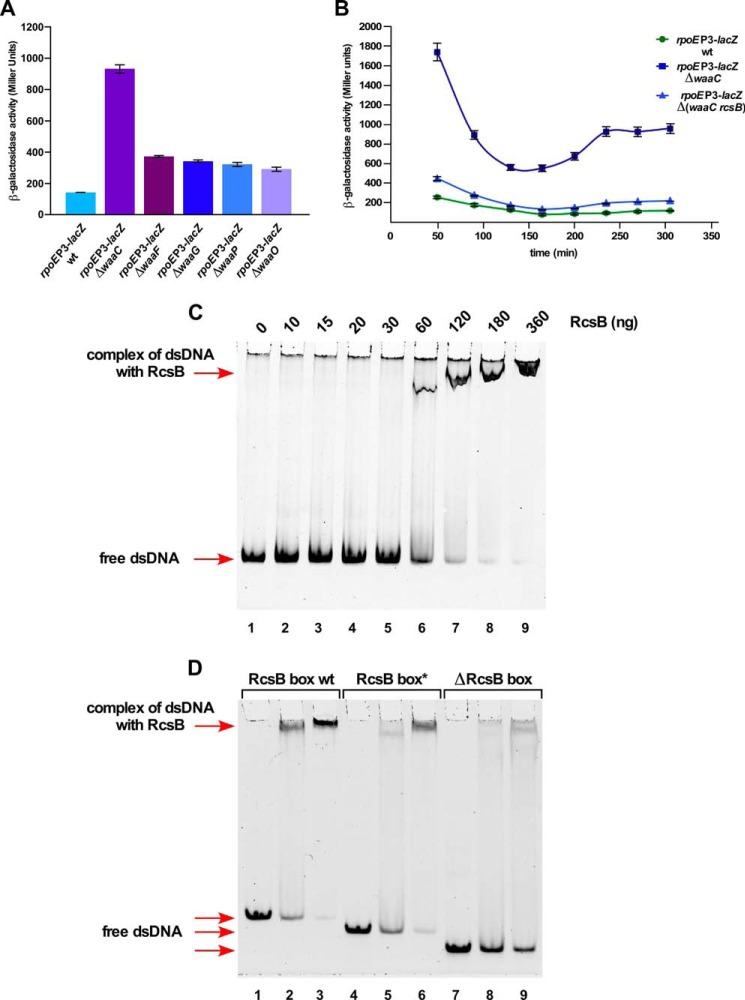FIGURE 7.
The Eσ70-recognized rpoEP3 promoter is positively regulated by the Rcs two-component system in response to LPS defects in an RcsB-dependent manner. A, cultures of SR18987 carrying the rpoEP3 promoter fusion and its derivatives with non-polar deletion in various waa genes were grown in LB medium at 30 °C and analyzed for β-galactosidase activity after different intervals. Four independent derivatives in each case were analyzed and averaged data are presented after a 250-min incubation. B, cultures of SR18987, its ΔwaaC and Δ(waaC rcsB) derivatives were grown in LB medium at 30 °C and analyzed for β-galactosidase activity after different intervals of growth. Averages from four cultures in each case are plotted. C, the RcsB-DNA interaction at the P3 promoter. Thirty-five ng of a 280-bp wild-type DNA fragment that includes a putative RcsB recognition site was incubated with increasing concentrations of phosphorylated RcsB and analyzed by EMSA on a 4% native gel. D, specificity of RcsB-DNA interaction at the P3 promoter. Three DNA probes included a 81-bp DNA fragment with the wild-type RcsB sequence (lanes 2 and 3), a second 78-bp DNA fragment lacking conserved CAT trinucleotide residues of RcsB consensus (lanes 5 and 6), and a third 71-bp probe lacking nucleotides CATGGTTTGG of RcsB consensus (lanes 8 and 9) were incubated with 120 and 180 ng of RcsB for each probe, respectively. Lanes 1, 4, and 7 serve as control with DNA alone. After incubation the reaction mixtures were analyzed on a 6% native gel.

